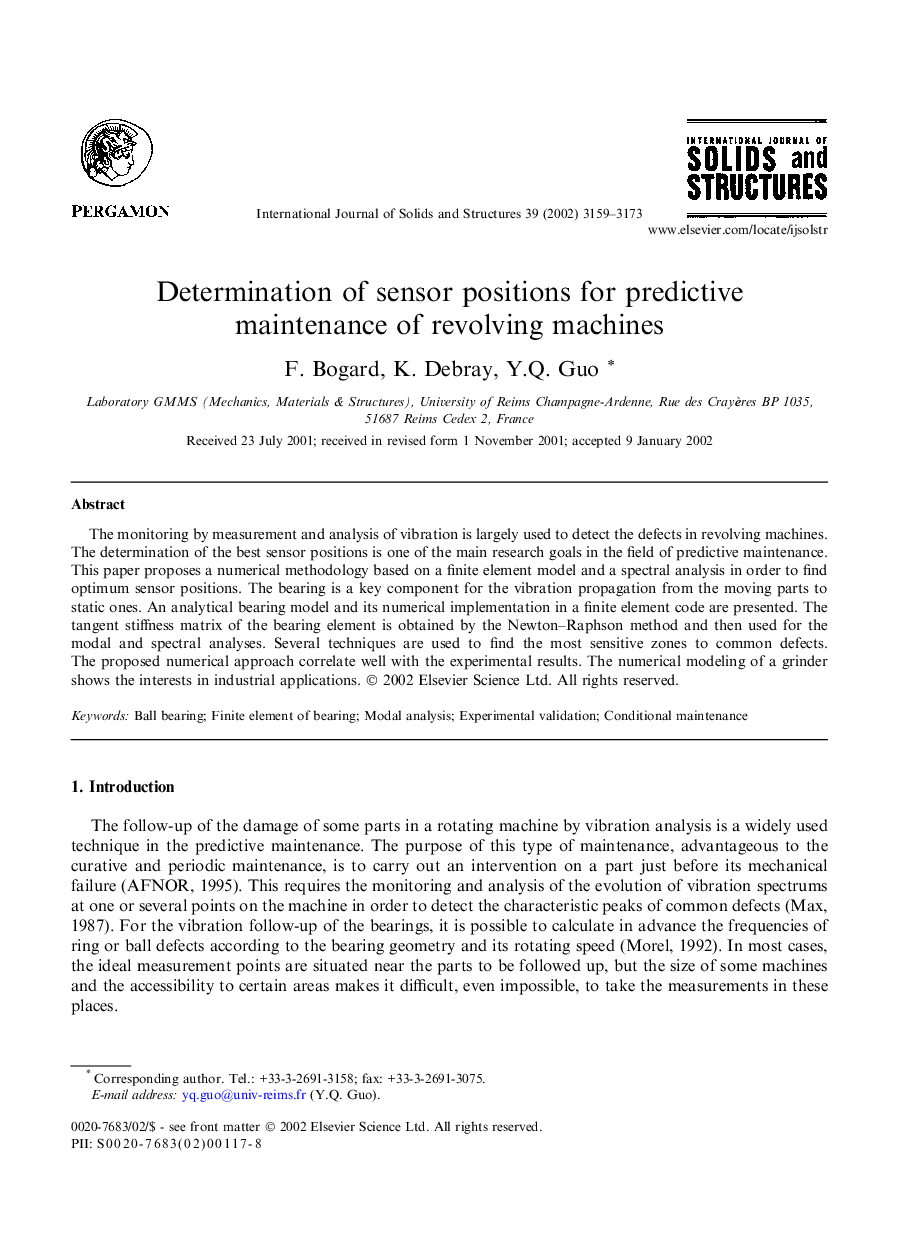| Article ID | Journal | Published Year | Pages | File Type |
|---|---|---|---|---|
| 282298 | International Journal of Solids and Structures | 2002 | 15 Pages |
The monitoring by measurement and analysis of vibration is largely used to detect the defects in revolving machines. The determination of the best sensor positions is one of the main research goals in the field of predictive maintenance. This paper proposes a numerical methodology based on a finite element model and a spectral analysis in order to find optimum sensor positions. The bearing is a key component for the vibration propagation from the moving parts to static ones. An analytical bearing model and its numerical implementation in a finite element code are presented. The tangent stiffness matrix of the bearing element is obtained by the Newton–Raphson method and then used for the modal and spectral analyses. Several techniques are used to find the most sensitive zones to common defects. The proposed numerical approach correlate well with the experimental results. The numerical modeling of a grinder shows the interests in industrial applications.
